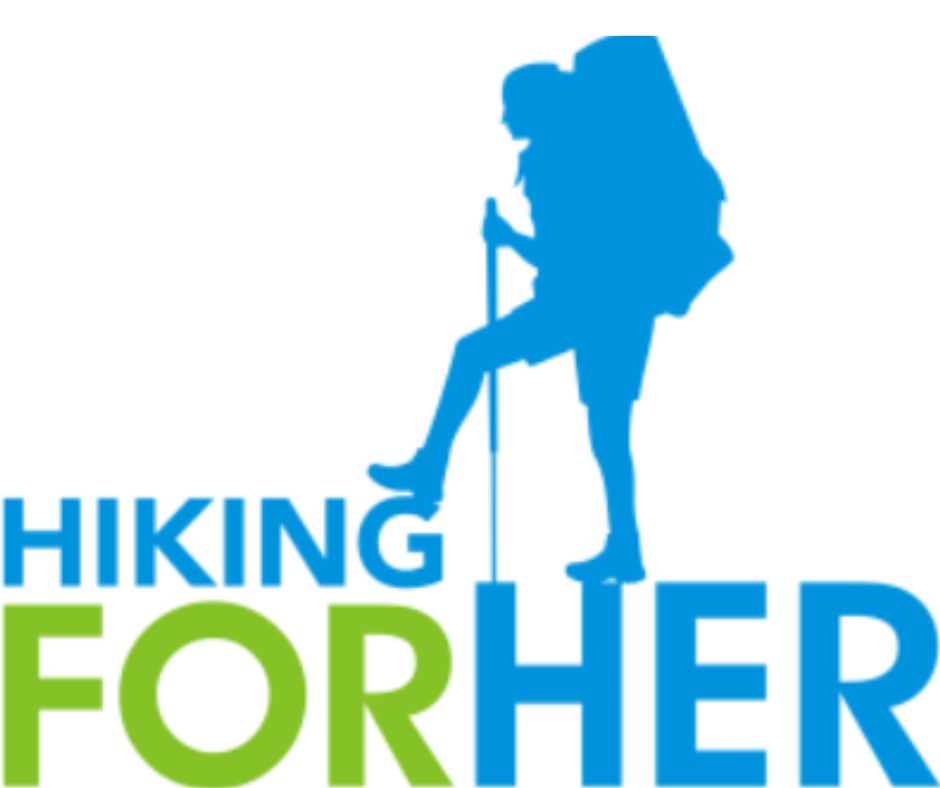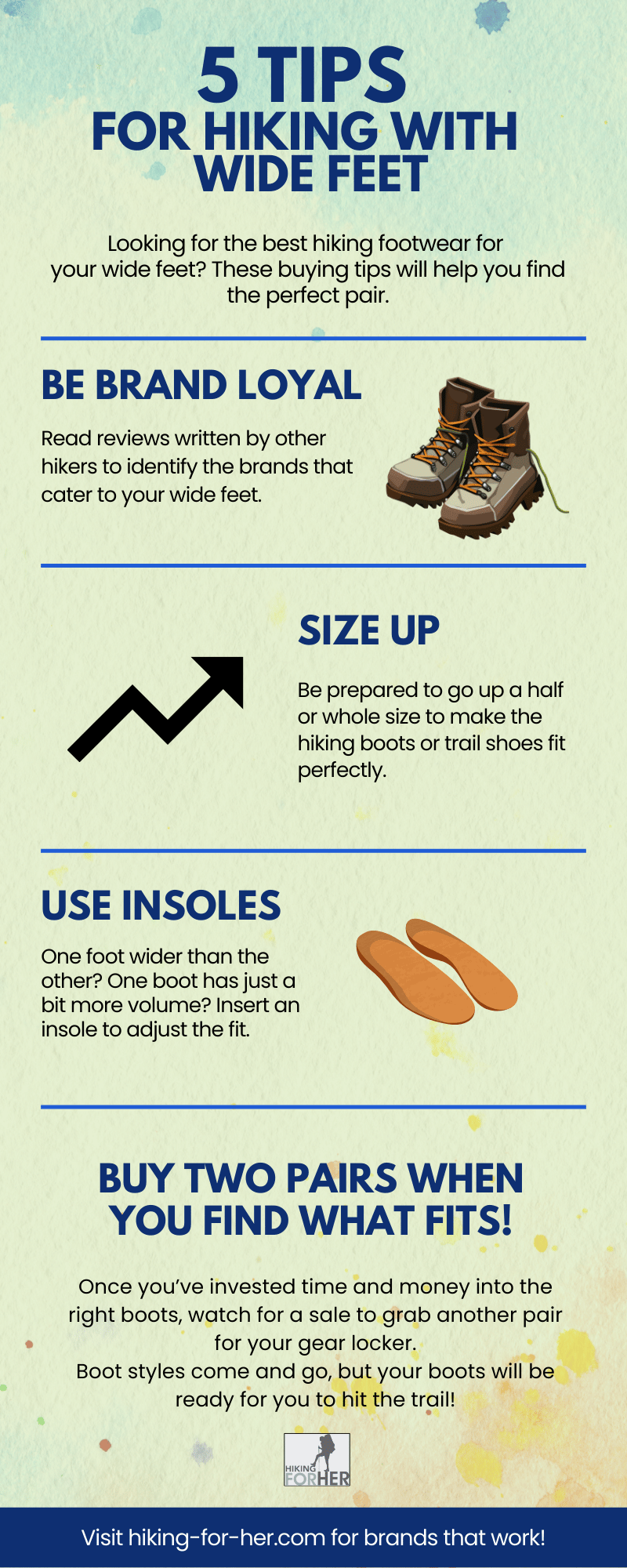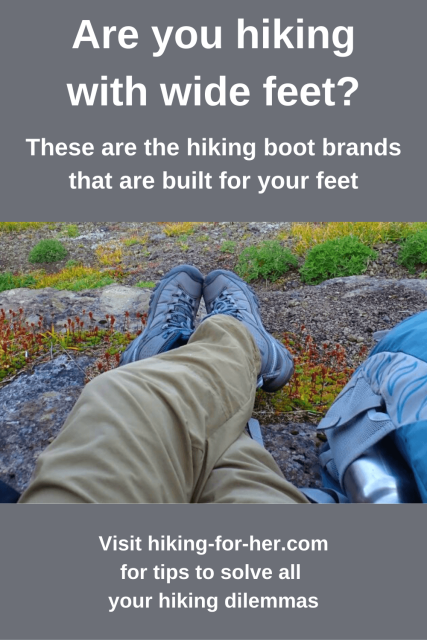Best Womens Wide Width Hiking Boots:
Your Guide To Hiking With Wide Feet
By Diane Spicer
If you're hiking with wide feet, you know what I mean when I say happy feet are important.
You're here to finally find the best pair of womens wide width hiking boots.
Or the best hiking shoes for wide feet.
So let's get to it!
Just so you know, I recommend the brands and stores that deliver the goods. Some of my links go to trusted affiliates, meaning Hiking For Her earns a small percentage of your purchase price.
- It costs you nothing extra to support this website while hiking with wide feet ;)
Best brands for wide feet hiking boots
As a hiker, I have my personal favorites that I know work for my quirky ultra wide feet.
I also follow all the hiker chatter on line, so I learn about hiking boot brands reported to work well for hiker's wide feet.
Although I try hard to give you reliable information, please be flexible with these recommendations.
Your wide feet are unique. You will have to experiment with the brands I'm about to recommend.
Ready?
Here are my two lists of wide width hiking boot brands you should look at.
My personal favorites for
hiking footwear that accommodate wide feet
These brands have been on my wide feet for decades:
Recommended for hiking with wide feet
based on reviews, statistics and trail report
These brands are reported to perform well for other hikers with wide feet:
Shopping tips for wide width hiking boots
Before you dig into particular brands, it's important to realize that every outdoor brand becomes known for certain important features.
The brands of hiking footwear I'm sharing here have wide width options along with their other options, or are built with a wider toe box to begin with.
But beyond brand names, it is important to know exactly how to shop for wide width footwear.
- Drop down to my boot buying tips before you commit to a pair.
And if this is your first pair of hiking boots, read my detailed tips for selecting the right pair.
Now let's take a tour of those brands!
Why Keen boots make hiking with wide feet
a comfortable experience
Here's the whole story in one diagram:
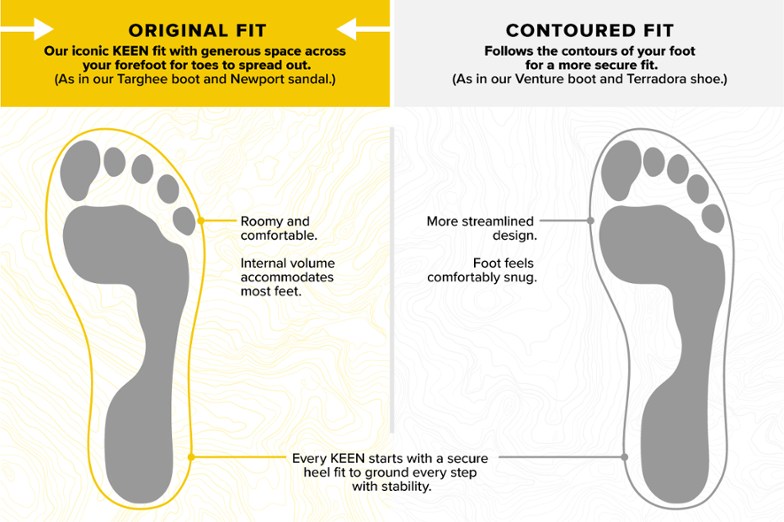 This diagram is courtesty of REI.
This diagram is courtesty of REI.Note the word "Targhee". It's the Keen boot designed for hiking with wide feet.
That's why this is the boot you will find on my feet for day hikes on established trails, wearing a day pack.
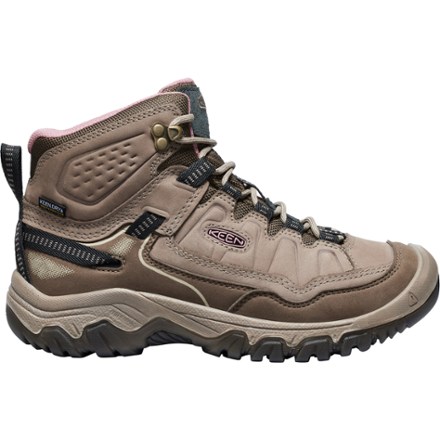 KEEN Targhee IV Mid Waterproof Hiking Boots
KEEN Targhee IV Mid Waterproof Hiking Boots
You might also want to read my detailed Targhee review.
Bottom line on Keens
They make exceptional wide width hiking boots for day hikes, giving you out-of-the-box comfort and support.
Their price point is lower than more rugged boots.
These boots are great for beginner hikers and folks who stick to established trails with light loads (a 20L daypack and camera, for example).
Available in women's size 5 - 11 US.
Salomon hiking boots if you are
hiking with wide feet
These are the boots I use when I need good traction and ankle support, on day hikes as well as multiday trips over rough terrain.
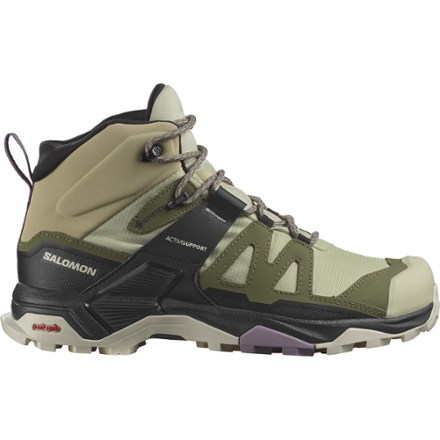 Salomon X Ultra 4 Mid GORE-TEX Hiking Boots
Salomon X Ultra 4 Mid GORE-TEX Hiking Boots
Note that these boots have a high cut. If you don't want your ankles surrounded and protected, consider these Salomon trail shoes instead.
They are what I wear for straightforward day hikes on non-rocky, dry to moderately muddy trails.
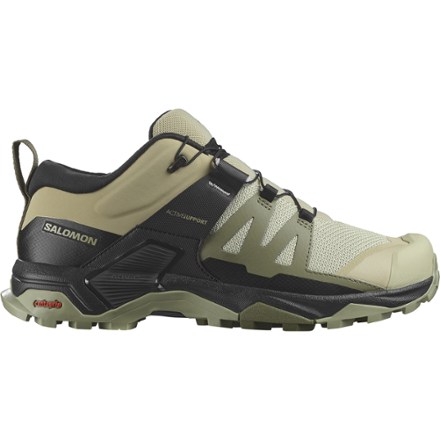 Salomon X Ultra 4 Low Hiking Shoes
Salomon X Ultra 4 Low Hiking Shoes
But if you really want that ankle protection paired with rock solid grip, here's a slightly lower Salomon hiking boot cut to consider:
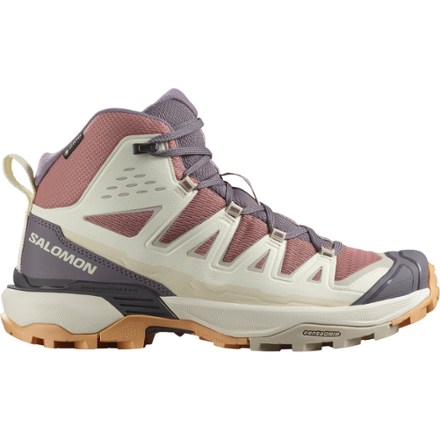 Salomon X Ultra 360 Edge Mid GORE-TEX Hiking Boots
Salomon X Ultra 360 Edge Mid GORE-TEX Hiking Boots
Bottom line on Salomons
When you're looking for excellent traction and good ankle support, plus sturdy weather protection and durability, look at Salomon
You can use these boots for day hiking when conditions are rocky or steep.
And they do well on multi-day hiking trips, too. Mine have been to Alaska and the Northwest Territories multiple times.
Zamberlan hiking boots for wide feet
These boots are built for rugged use. And the price reflects that.
So only look at these if you're going to be wearing them through tough conditions.
Zamberlans are on my feet when I do multiweek backcountry treks in Canada and Alaska, because they stand up to water, rock, jagged trail debris, snakes, and more.
And while they are not labeled "wide width", the toe box is plenty roomy for my wide feet.
They also receive rave reviews from hikers with toe problems, including hallux rigidus and arthritis.
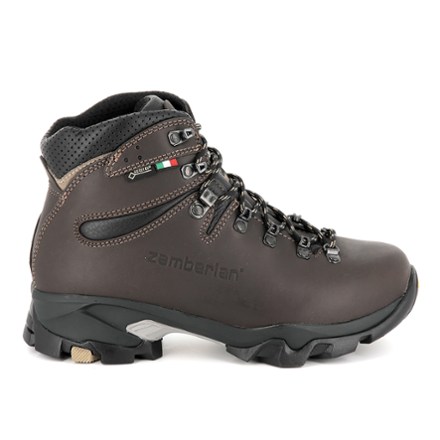 Zamberlan 996 Vioz GTX Hiking Boots
Zamberlan 996 Vioz GTX Hiking Boots
An important sizing note
I always go up one full size with this brand, to accommodate foot swelling and my two pairs of hiking socks.
In fact, the first time I bought a pair of
Zamberlan hiking boots, I made the mistake of ordering my regular size. They were a bit snug :/
- So if you're going to use sole inserts, or are at all concerned that your regular size might be too snug, order up one size.
Bottom line on Zamberlans
when hiking with wide feet
These boots are an investment purchase, so take care to read my notes above.
Zamberlan boots are designed and built for rugged use on trails that can punish your feet and ankles without proper support.
Their toe box allows ample room for wide feet, keeping your toes comfortable whether ascending or descending steep trails.
Ideal for multi-week backcountry treks in variable weather!
But they are way overbuilt if you're just getting started as a hiker.
Merrell trailwear can help when
hiking with wide feet
These are the trail shoes I wear when I want to go fast and light, with minimal weight on my back.
They give good traction and are quite comfortable.
Ordering up a half size gives you a good chance that you will enjoy roominess, if you have any doubt.
Also, I only wear one pair of socks with them, and never get blisters.
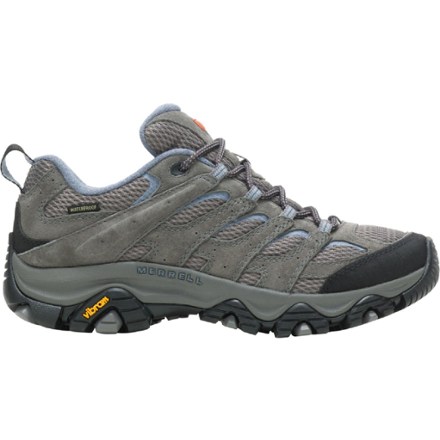 Merrell Moab 3 Waterproof Hiking Shoes
Merrell Moab 3 Waterproof Hiking Shoes
Bottom line on Merrells for hikers with wide feet
Merrell can be your go-to for fast, lightweight hiking when you want good traction as well as comfort.
Available in womens 5 - 13 US. Be sure to select the wide option.
Oboz hiking boots in wide widths
These boots seem to run a bit small, so be sure to order up a size to accommodate your hiking socks.
And make certain you select the wide option.
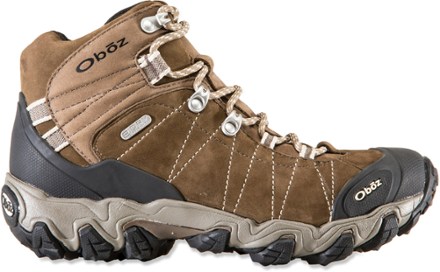 Oboz Bridger Mid Waterproof Hiking Boots
Oboz Bridger Mid Waterproof Hiking Boots
Bottom line on Oboz
Oboz gets mixed reviews online.
Be sure to read the reviews that mirror your own unique mix of arch height, heel width, and sizing. Only consider these boots if someone else similar to you has had good results.
Available in womens 6 - 11 US, with half sizing to size up when needed.
LaSportiva boots for wide feet
These boots are ankle protectors, so choose them for trails that will fling roots, rocks and debris at you.
And the tread will impress you.
As with many European brands, they can run a bit narrow. You know what to do if you're hiking with wide feet!
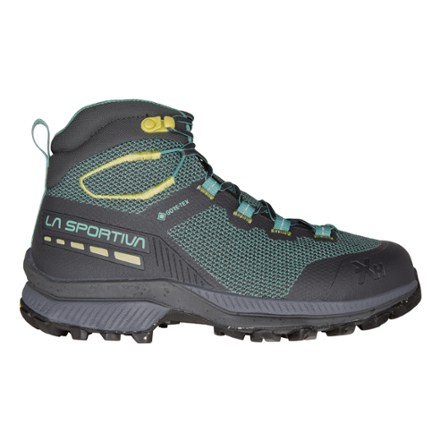 La Sportiva TX Hike Mid GTX Hiking Boots
La Sportiva TX Hike Mid GTX Hiking Boots
Bottom line on La Sportiva
I've seen LaSportiva boots on the feet of glacier hiking guides, long trail hikers as well as dayhikers.
Their good ankle support appeals to hikers who expect to conquer uneven terrain while carrying a loaded backpack for long distances.
Their sizing may be listed as "36EU", for example, so use the size conversion chart to figure out where you fall in their sizing.
Altra Lone Peak boots
These boots feature a wide foot bed, nice and roomy for your toes. They call it the "Footshape toe bed".
It is designed to allow your toes to relax and spread out naturally.
They run up to a size 12.
 Altra Lone Peak Hiker 2 Hiking Boots
Altra Lone Peak Hiker 2 Hiking Boots
Bottom line on Altra for wide feet
Altra may solve your hiking boots problems if you're struggling to find a comfortable and supportive pair.
Their unique toe bed may be just the design your feet need to hit the trail.
They're light on your feet, which translates into less leg fatigue.
Available in womens 5.5 - 12 US.
New Balance for wide feet
The New Balance X Hierro V1 mid cut trail running shoe may be a good option for you if you're sticking to maintained trails.
They offer not only a wide width, but an extra wide width (4E). That's unique!
Vibram soles provide good traction on wet or steep trails, but probably won't get you far on severely rocky inclines.
Bottom line on New Balance
Some reviews mention that quality is lacking, which means they won't last long if you use them frequently.
Because these shoes are low cut, you won't have lots of ankle support. That may be good news if you want to go fast and light.
Comfort is an individual decision, making it important to wear these before you commit to a big hike.
Tip: Amazon Prime members might be eligible for a free 7-day try-on available for some sizes and colors, along with free shipping and returns.
Sizing on these New Balance runs from 5 - 13 US, with your choice of wide or extra wide.
If all else has failed, give these a try.
Topo Athletic Trailventure boots for wide feet
If you have wide feet, you want a roomy toebox for your comfort and safety on a hike.
These Trailventure 2 WP boots are built to give you that, plus waterproof construction, Vibram outsole, and a generous toe plate to protect your feet on rocky trails.
If you'd prefer trail shoes, check out their Topo Athletic Women's Trailventure 2 shoes and other options.
Bottom line on Topo
If you're a dayhiker who enjoys established trails in all kinds of weather (think wet, dry, hot, cold), these boots are going to give you traction and ventilation while keeping stream crossings simple.
Adding insoles to these boots will provide more cushioning. These Treadlabs insoles can be just what you need to achieve the perfect fit.
The price point is reasonable, too. That works to your advantage when you replace them.
Shopping tips
for buying wide width trail footwear
There are many brands which have given hikers with wide feet good outcomes. And now you're familiar with some of them.
Here are a few general tips for shopping for wide width hiking boots, to make your choice a bit easier.
You want to be hiking with wide feet and a wide smile on your face, right?
Hiking boot reviews are gold mines of information
As with buying any hiking gear, read the reviews and cross check user experiences before trusting your feet to any one brand.
Pay close attention to how reviewers describe their feet.
- You want someone to mention a wide width.
- And if you're lucky, they will also mention their arch height.
- Also note the types of hiking they are doing so it matches your own hiking style.
How much toe room do you need
in your hiking boots?
This health related website states that you should have between 3/8” to 1/2” of space between your longest toe and the end of the shoe.
A good way to check is to pull the tongue way back and see if you can get your index finger between the farthest point of the toe box and your relaxed toes.
And speaking of toe boxes, you want a hiking boot that has a square, deep design, something the Keen boots above will offer you.
If in doubt, size up in hiking boots
If you have feet that are just a tad bit wider than "normal", you might not have to worry about sizing.
But if you have truly wide feet, and have struggled with sizing before, order up a size or at least a half size.
And pay attention when you look at the boot, either on line or in the store.
- You want the "wide" version if the brand makes regular width as well.
Are your feet two different sizes?
If one foot is larger than the other, insoles become your secret weapon for a customized fit. One boot receives an insole, taking up some volume and equalizing the fit from side to side.
If you also have high arches, the insoles provide cushioning to enhance the comfort of the hiking boot or trail shoe you're using.
Bonus: They can be replaced more frequently than the boots, which increases the lifetime of one pair of boots or shoes.
Relax, it's REI!
Returning gear to REI Co-op is easy and hassle free if your first purchase isn't a perfect fit.
- Lots more REI benefits for members beyond that! If you're not a member, you are seriously missing out as an outdoors woman.
Be prepared!
I don't recommend that you pop into a gear store on a whim to try on wide width boots or trail shoes.
Go at the end of your day when your feet are at their maximum size.
Bring your own hiking socks, so you can get an exact feel for how wide the boots run.
- What's that? You don't use dedicated hiking socks? Read up on hiking socks!
If the lacing right out of the box seems weird on your feet, unlace them and try some other lacing techniques.
Be sure to walk around the store wearing your sock and boot combo. Do this for long enough to generate a bit of heat in your feet.
During movements, look for:
- heel slipping
- toe cramping
- pressure on the sides of mid and forefoot
- pressure under the ball of your foot
- any feedback from your wide feet that tells you these are not the pair of boots for you.
Pro tip for womens wide width hiking boots
Once you've found your perfect wide width hiking boot, buy two pairs if budget allows.
Brands have been known to switch up their designs, leaving some of us a bit disgruntled when replacing wide boots.
This happened to me recently with Salomon, but luckily I had a second pair stashed in the gear locker.
To be honest, this strategy may backfire if the company debuts an updated, more perfect version of hiking footwear.
- Be sure to try on new versions to compare them with your well loved model.
- Keep an open mind!
Need insoles that fit wide hiking boots?
The interior volume of your hiking footwear is important when you're hiking with wide feet.
The design may not leave a lot of room for your socks and feet unless you remove the insoles.
But that may create new problems.
Solution? Swap out the insoles for something designed for wide feet.
|
This company is all set to help you out: TreadLabs. Check out their insoles for wide feet that work hard to cushion and protect you from impacts. Here are more tips on how to use hiking boot insoles. And read my review of TreadLabs insoles. |
 Pace Wide Insoles | Extra Firm Insoles For Wide Feet - Tread Labs Pace Wide Insoles | Extra Firm Insoles For Wide Feet - Tread Labs
|
Embrace hiking with wide feet
Don't let the width of your feet slow you down.
(Ha! A hobbit foot just flashed through my mind. Embrace the width!)
Take good care of your wide feet with my foot care tips for hikers.
BTW, If you've found other brands of footwear that makes hiking with wide feet a good experience for you, .
I'll add it to our list so we can help our virtual trail friends.
Home > Best Hiking Gear >
Hiking With Wide Feet: Best Womens Wide Width Hiking Boots
Add this pin to one to your Pinterest hiking boards!
|
I get emails all the time about what I wear, eat, carry and love to use on the trail. That's
why I provide affiliate links to you: the best gear that I use myself and have seen used by other hikers is instantly
available for your consideration, and the gear company sends a few
pennies per dollar to this reader-supported hiking website. There is no added cost to you! Everyone ends up a winner: Great gear for you, strong gear companies, and more free hiking tips for everyone. Thanks very much for your support. It's warmly and sincerely appreciated. It also helps send these hiking tips to all your virtual trail buddies around the globe. |
 |
